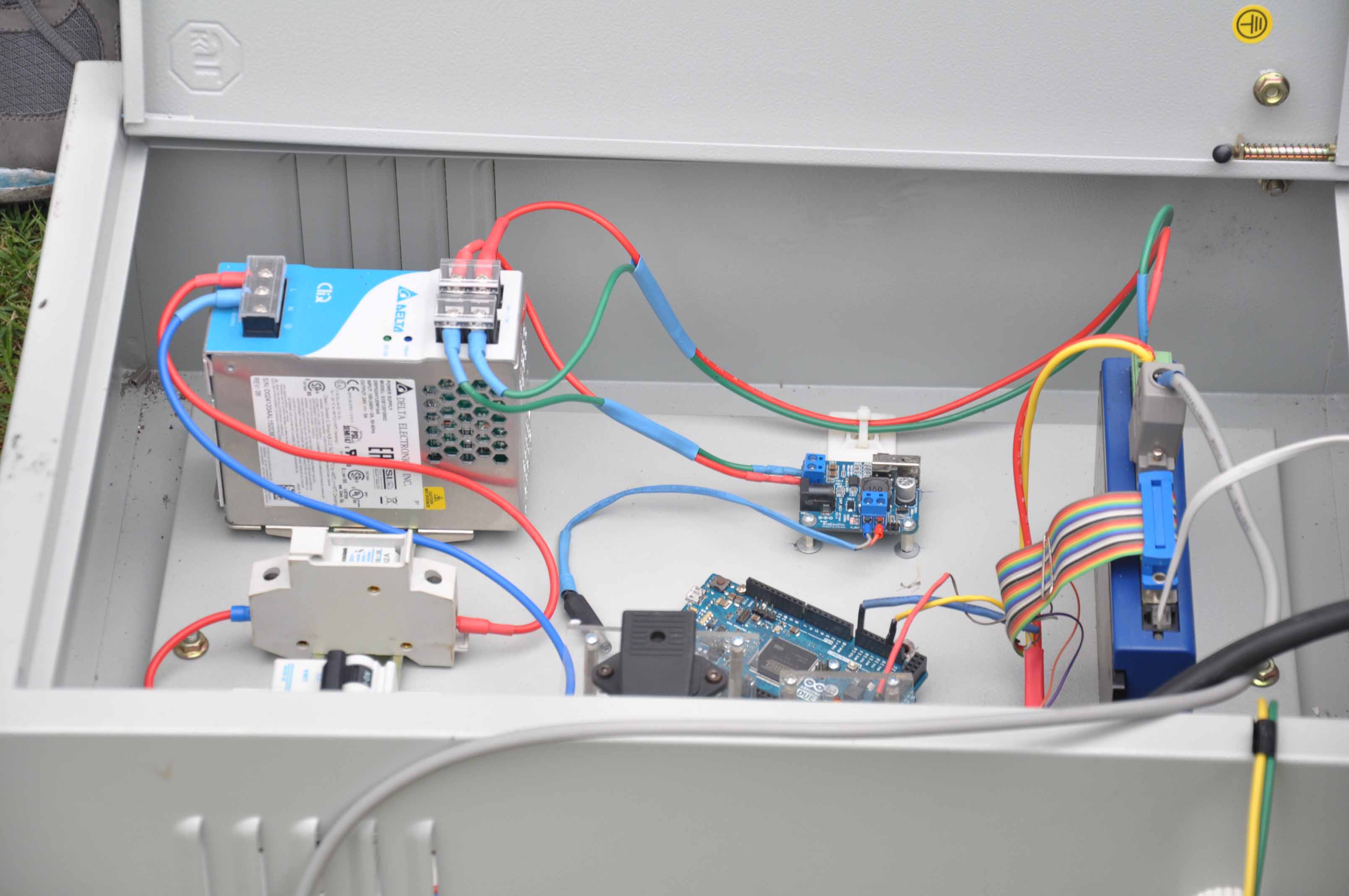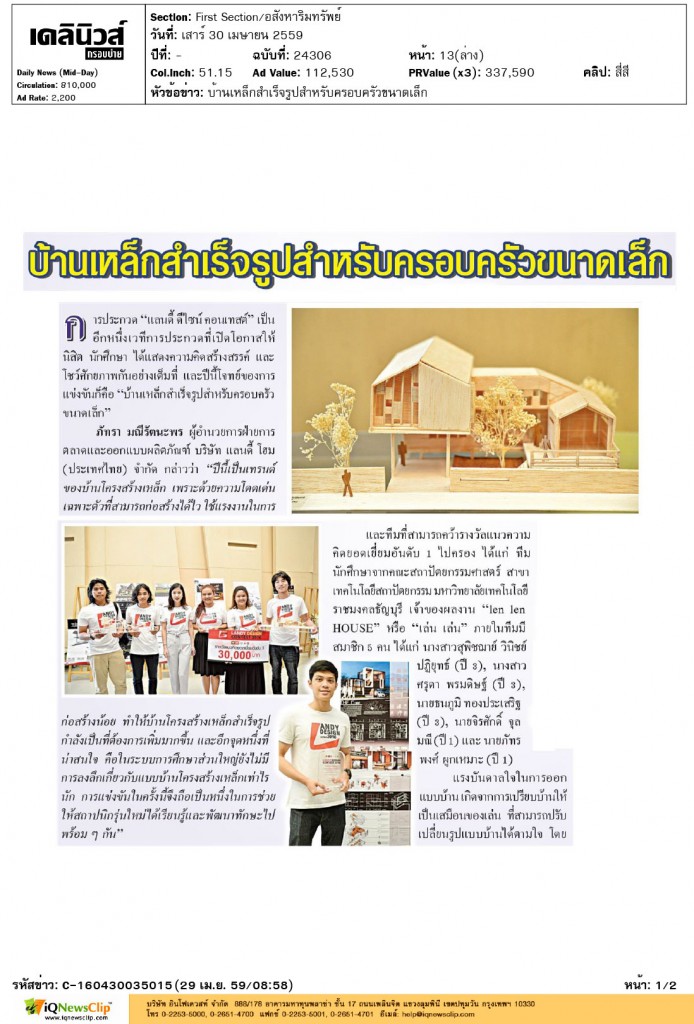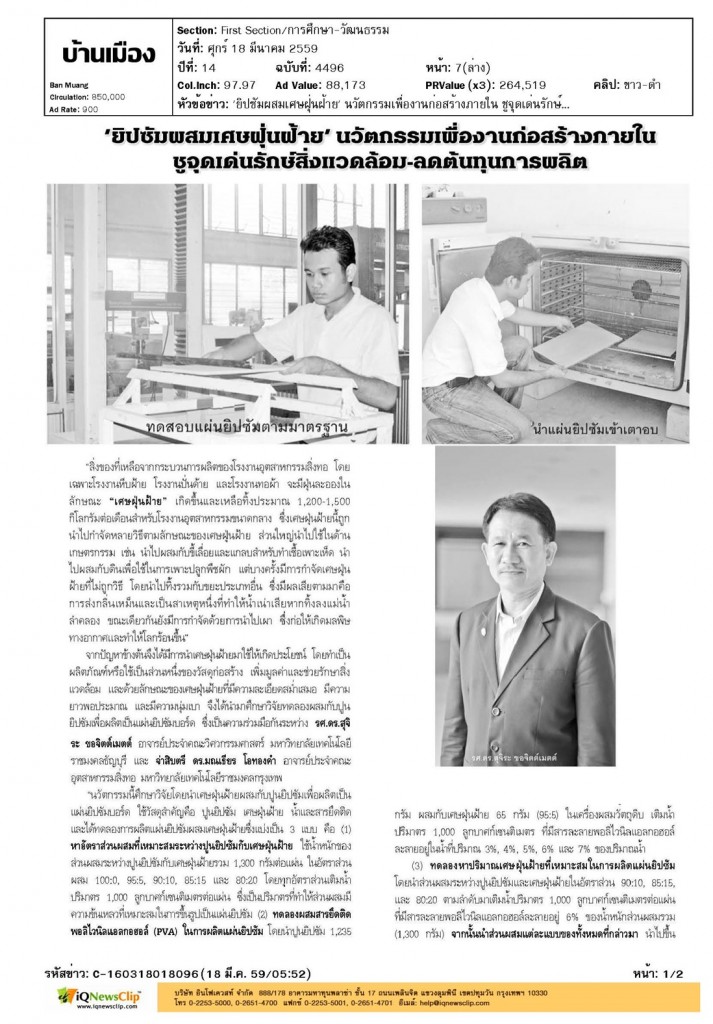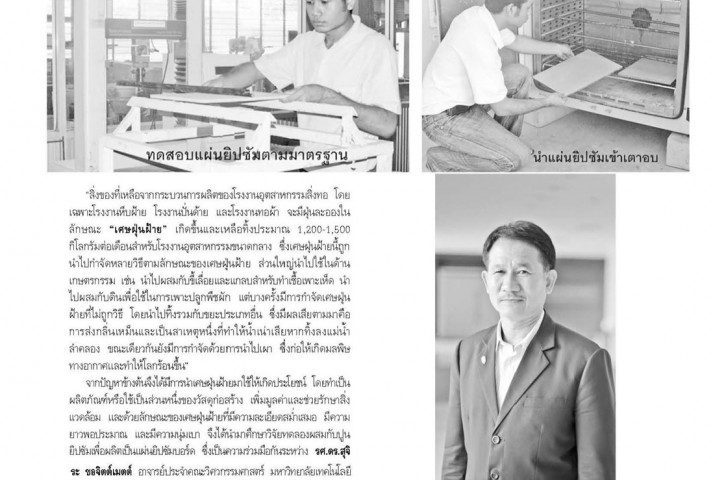
Solar Tracking System for Solar Cell Panels by Using a Micro-controller
15/09/2016
Prefabricated House Made of Steel for Small Families
15/09/2016Gypsum mixed with Cotton Dust – an Innovation for Indoor Construction that Protects the Environment by Reducing Production Costs
There is an abundant amount of cotton dust leftover from production processes in factories in the textile industry, especially cotton gin factories, spinning factories, and textile mills. There is approximately 1,200 – 1,500 kg of cotton dust leftover per month for medium-sized textile factories. Nevertheless, there are several ways to discard cotton dust, depending its characteristics, but it is mostly applied in agriculture, such as mixing cotton dust with risk husk and sawdust to produce a formula to cultivate mushrooms, and mixing it with soil to grow vegetables. However, sometimes cotton dust is thrown away with other types of waste, which produces a foul smell and sewage and burned, contributing to air pollution and global warming.
Due to the aforementioned problems, cotton dust has been used to make products or as a part of producing construction materials, to increase the value of cotton dust while also protecting the environment. Assoc. Prof. Dr. Sujira Khojimate, permanent professor of the Faculty of Engineering at Rajamangala University of Technology Thanyaburi (RMUTT) and Sergeant Major Third Class Dr. Monthien Ohthongkam, permanent professor of the Faculty of Textiles at Rajamangala University of Technology Krungthep (UTK) have decided to test cotton dust by mixing it with gypsum in order to produce a gypsum board.
“This innovative research consisted of using gypsum plaster, cotton dust, water, and adhesives to produce a gypsum board. There were trial productions to produce gypsum boards, divided into three types, with the first being to determine the appropriate ratio of gypsum plaster and cotton dust. The combined weight of the gypsum plaster and cotton dust mixture is 1,300 g per board, with the following ratios: 100:0, 95:5, 90:10, 85:15, and 80:20. Every ratio was filled with 1,000 cm3 of water per board, a volume that makes the mixture have a suitable consistency. The second type of production was to mix polyvinyl alcohol (PVA) to produce the board by mixing 1,235 g of gypsum plaster with 65 g of cotton dust (95:5 ratio) in a machine that mixes raw materials. Then, add 1,000 cm3 of water, which already has 3%, 4%, 5%, 6%, and 7% polyvinyl alcohol (PVA) dissolved in it. The third type of production is to use a mixture of gypsum plaster and cotton dust in the ratio of 90:10, 85:15, and 80:20, and add 1,000 cm3 of water per board, which already contains a 6% solution of the combined weight (1,300 g), to dissolve polyvinyl alcohol (PVA). Afterwards, use each mixture to form a gypsum board casting with the following dimensions: 300 x 400 mm, 9 mm thickness, and bake it in the oven at a temperature of 60 °C for seven hours. Finally, dry the board completely and test the breaking point and modulus of rupture” said Sergeant Major Third Class Dr. Monthien Ohthongkam.
Assoc. Prof. Dr. Sujira Khojimate explained that research results from mixing gypsum plaster with cotton dust revealed that the pressure value, modulus of rupture, and weight of the board decreased when it has been mixed with more cotton dust. Generally, when fiber is mixed with construction materials, fiber will help strengthen the material after the fibers have been arranged, in order to create properties that make the materials mix together to help spread the load, as the fiber is short and quite detailed. When it is mixed in the gypsum board in an increasing amount, the board will not be as strong as there is an abundant amount of fibers that are not aligned, and the board, overall, will be lighter. Thus, polyvinyl alcohol (PVA) was used to make the gypsum boards sturdier. Polyvinyl alcohol (PVA) acts as a connector to hold the fibers and gypsum plaster together. A ratio of 95:5 gypsum plaster and cotton dust makes the gypsum board sturdier. However, the appropriate amount of polyvinyl alcohol (PVA) is between 6 to 7% of the amount of water used, with the ratio of the mixture between gypsum plaster and cotton dust at 90:5 and 90:10, which has a pressure value and modulus of rupture according to construction industry benchmarks for gypsum boards (Thai Industrial Standard 219-2524). The appropriate ratio between gypsum plaster and cotton dust is 90:10 and can be used for construction, such as for ceilings and covering walls.
Besides being lightweight, sturdy, and standardized, gypsum boards also reduce production costs, help protect the environment, and are a new alternative for the manufacturing industry.





